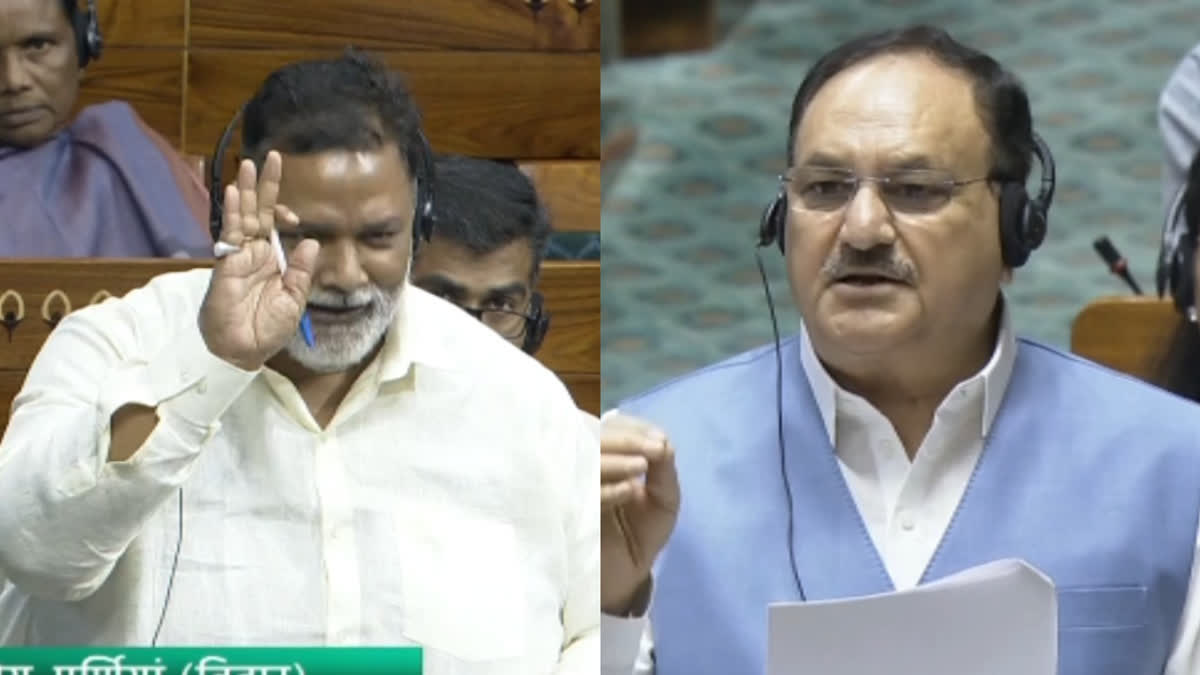New Delhi: Union Health Minister JP Nadda acknowledged in Parliament on Friday that he was among those Indians who did not carry out sufficient physical activity. He was discussing in Lok Sabha the WHO's recent report stating that half of India's adult population is physically unfit.
Responding to a question by Lok Sabha MP Rajesh Ranjan (Pappu Yadav), Nadda said the WHO defines 'sufficient physical activity' as 75 minutes of vigorous intensity activity per week like running, digging, construction work, outdoor games etc.
"I want to tell the country that the report is not on 'fit on unfit'. The report says that 59.9 percent of India do not do sufficient physical activity. When we use 'fit or unfit', we sensationalise it. According to the report, those who carry out 75 minutes of rigorous activity per week fall into sufficient... Going by it, I think you and I come under insufficient physical activity," Nadda said, pointing to Pappu Yadav.
At this, the house broke into a laughter as MPs from both NDA and the opposition realised the humour in the remark. Yadav had asked a question whether the government was taking any steps on the report about 60 percent of India's being "unfit". Nadda said the WHO's report stating that half of India's adult population is physically unfit relied on data collected only from three states and one UT, and the results were extrapolated through a modelling technique, indicating inbuilt methodological issues.
The National NCD Monitoring Survey of Indian Council of Medical Research (ICMR) 2020 assessed physical activity among Indian adults and found that 58.7 per cent had conformed to the WHO recommendations, Nadda told the Lok Sabha.
He informed that the ICMR in another study entitled 'Physical activity and inactivity patterns in India' results from the ICMR-INDIAB Study (phase 1) conducted in 2014 has found that 54.4 per cent of the sampled adult population were insufficiently physically active. The study findings were based on the data collected from three states -- Tamil Nadu, Maharashtra and Jharkhand -- and Union Territory of Chandigarh.
Based on this ICMR-INDIAB Study (Phase 1) data, the WHO in collaboration with Lancet published an article entitled "National, regional and global trends in insufficient physical activity among adults from 2000 to 2022: a pooled analysis of 507 population based surveys with 5.7 million participants" and reported enhanced prevalence of insufficient physical activity among Indians between 2000 (22.3 pc) and 2022 (49.4 pc).
"The WHO relied on the data collected only from 3 states and one UT and extrapolated results through a modelling technique indicating inbuilt methodological issues. The projections to 2030 are also based on extrapolations and modelling," Nadda said. The WHO in its Global Status Report on Physical Activity 2022 studied the prevalence of insufficient physical activity among adults aged over 18.
Inactivity among adults is high in many high-income countries, including the USA (33.7 pc), Canada (37.2 pc) and Japan (44.7 pc). The Government of India focuses on health promotion and awareness generation through countrywide movements like 'Fit India Movement' where people are encouraged to remain healthy and fit. Many activities for healthy living, including physical activities are also promoted through the National Programme for Prevention and Control of Non-Communicable Diseases (NP-NCD), Nadda said.



